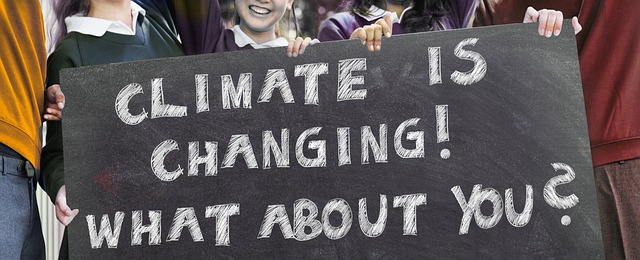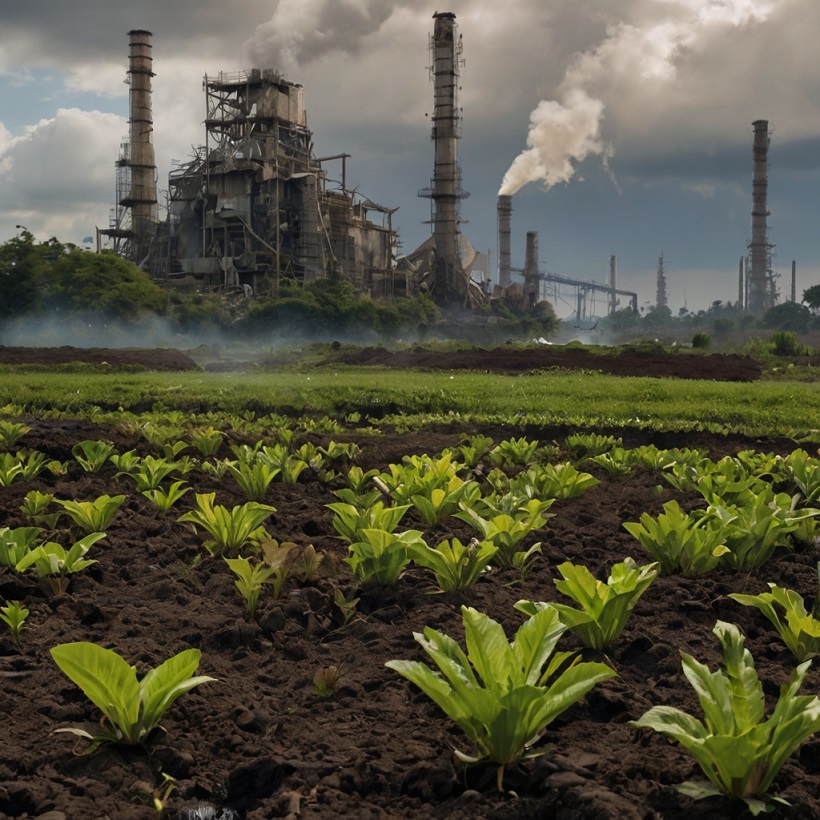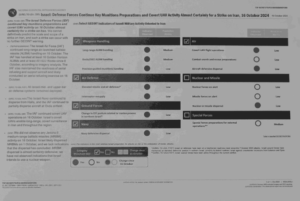Climate Change Policy in the United States: A Comprehensive Overview
Climate change isn’t just a policy issue; it’s personal. Imagine your children asking what we did to save the planet. What will you tell them? The decisions we make today will shape the world they inherit. This article dives into the critical climate change policies in the United States, exploring how they aim to protect our planet for future generations.
Introduction to Climate Change Policy in the United States
What is Climate Change Policy?
Climate change policies are measures and regulations put in place by governments to address the impacts of climate change. These policies aim to reduce greenhouse gas emissions, promote renewable energy, and ensure sustainable development. In the United States, climate change policy has evolved significantly over the decades, reflecting the growing urgency to tackle this global challenge.
Table of Contents
The Urgency of Addressing Climate Change
Climate change is accelerating at an alarming rate. From rising sea levels to more frequent and severe weather events, the impacts are becoming increasingly evident. Addressing climate change is no longer an option but a necessity. Effective policies are crucial in mitigating these impacts and ensuring a livable planet for future generations.
The Evolution of U.S. Climate Change Policies
Early Environmental Policies
The Clean Air Act of 1963
The journey of U.S. climate policy began with early environmental legislation. The Clean Air Act of 1963 was one of the first significant steps. It aimed to control air pollution on a national level, laying the groundwork for future climate policies. This act established the framework for regulating emissions from both stationary (factories) and mobile (vehicles) sources.
The Establishment of the Environmental Protection Agency (EPA)
In 1970, the federal government established the Environmental Protection Agency (EPA). The agency’s primary role is to safeguard public health and the environment through regulatory and enforcement actions.
The Kyoto Protocol and the Paris Agreement
U.S. Participation and Withdrawal from the Kyoto Protocol
The Kyoto Protocol, introduced in 1997, was an international agreement focused on the reduction of greenhouse gas emissions. Although the U.S. initially signed the treaty, it did not ratify it, citing concerns over economic impacts and the exclusion of developing countries from mandatory emission reductions.
Commitment to the Paris Agreement
In 2015, the Paris Agreement marked a significant milestone in global climate policy. The U.S. pledged to cut its greenhouse gas emissions by 26-28% compared to 2005 levels by the year 2025. The agreement emphasized global cooperation and set the stage for more ambitious climate actions. Despite a brief withdrawal under the Trump administration, the U.S. rejoined the Paris Agreement under President Biden, reaffirming its commitment to combat climate change.

Current Climate Change Policies in the U.S.
Federal Initiatives
The Green New Deal
The Green New Deal is a comprehensive legislative proposal designed to tackle climate change and economic disparity. It aims to transition the U.S. to a 100% renewable energy system, generate millions of well-paying jobs, and ensure clean air and water for all.
Clean Power Plan
The Clean Power Plan, rolled out during the Obama administration, sought to curb carbon emissions from power plants significantly. Its goal was to cut emissions by 32% below 2005 levels by 2030. Despite legal challenges and a subsequent rollback under the Trump administration, the plan highlighted the potential for regulatory measures to reduce emissions from one of the largest sources.
State-Level Actions
California’s Climate Initiatives
California has been a leader in climate policy. Its cap-and-trade program, established in 2013, sets a limit on greenhouse gas emissions and allows companies to buy and sell permits to stay within that limit. The state also has ambitious renewable energy targets, aiming for 100% clean electricity by 2045.
Regional Greenhouse Gas Initiative (RGGI)
The Regional Greenhouse Gas Initiative (RGGI) represents a collaborative effort among several states in the Northeastern U.S. It stands as the nation’s first mandatory, market-based program to reduce greenhouse gas emissions. Participating states set a cap on emissions from the power sector and auction allowances to emit carbon dioxide. The proceeds are invested in energy efficiency, renewable energy, and other consumer benefit programs.
The Impact of Climate Change Policies
Environmental Impact
Reduction in Greenhouse Gas Emissions
One of the primary goals of climate policies is to reduce greenhouse gas emissions. Federal and state policies have contributed to a significant decline in emissions over the past decade. This reduction is essential for slowing the pace of climate change and mitigating its impacts.
Improvements in Air and Water Quality
Climate policies also aim to improve air and water quality. Regulations targeting emissions from power plants, vehicles, and industrial sources have led to cleaner air and water. These improvements have direct benefits for public health, reducing respiratory illnesses and other health issues associated with pollution.
Economic Impact
Job Creation in the Renewable Energy Sector
Climate policies often emphasize the development of renewable energy sources such as wind, solar, and hydropower. This focus has spurred job creation in the renewable energy sector. According to the Bureau of Labor Statistics, the solar and wind industries are among the fastest-growing job markets in the U.S.
Costs and Benefits to Various Industries
While transitioning to a low-carbon economy presents challenges, it also offers opportunities. Industries involved in renewable energy, energy efficiency, and sustainable practices stand to benefit. However, sectors reliant on fossil fuels may face economic hardships. Balancing these costs and benefits is a key consideration in the development of climate policies.
Social Impact
Health Benefits from Reduced Pollution
Reduced pollution from power plants, vehicles, and industrial sources has led to significant health benefits. Cleaner air reduces the incidence of respiratory diseases, heart conditions, and other pollution-related health issues. These health improvements translate into lower healthcare costs and improved quality of life.
Community Resilience to Climate Change Effects
Climate policies also aim to enhance community resilience to the effects of climate change. This includes measures to protect against extreme weather events, sea-level rise, and other climate-related impacts. Building resilient infrastructure and supporting vulnerable communities are critical components of these policies.
The Future of U.S. Climate Change Policies
Technological Innovations
Advances in Renewable Energy Technology
Technological innovation is crucial for achieving climate goals. Advances in renewable energy technologies, such as more efficient solar panels and wind turbines, are driving down costs and increasing the feasibility of large-scale adoption. Continued investment in research and development is essential for maintaining this momentum.
Potential of Carbon Capture and Storage (CCS)
Carbon capture and storage (CCS) is a technology that captures carbon dioxide emissions from industrial processes and stores them underground. This technology has the potential to significantly reduce emissions from sectors that are difficult to decarbonize. However, it requires substantial investment and supportive policies to scale up.
Policy Challenges
Political and Legislative Hurdles
Implementing effective climate policies faces significant political and legislative challenges. Climate change is a polarizing issue, with differing views on the urgency and methods of addressing it. Building bipartisan support and navigating legislative complexities are critical for advancing climate policy.
Balancing Economic Growth with Environmental Sustainability
Achieving climate goals while maintaining economic growth is a delicate balance. Policies must ensure that the transition to a low-carbon economy does not disproportionately impact vulnerable communities or industries. Equitable and inclusive approaches are necessary to garner broad support and ensure sustainable development.
International Cooperation
U.S. Role in Global Climate Agreements
The U.S. plays a crucial role in global climate agreements. As one of the largest greenhouse gas emitters, its participation and leadership are vital for the success of international efforts. Continued engagement in global negotiations and collaboration with other nations are essential for addressing the global nature of climate change.
Collaboration with Other Nations
International cooperation is key to tackling climate change. The U.S. collaborates with other nations through bilateral agreements, multilateral initiatives, and participation in global forums. Sharing technology, knowledge, and resources enhances the effectiveness of climate policies and promotes global sustainability.
Renewable Energy as a Key Component of Climate Policy
Solar Power
Growth Trends and Future Potential
Solar power has seen tremendous growth in recent years. The cost of solar panels has decreased significantly, making it more accessible for households and businesses. Government incentives, such as tax credits and rebates, have further boosted adoption. The future potential of solar power is immense, with continued advancements in technology expected to drive further growth.
Government Incentives and Subsidies
Government incentives play a crucial role in promoting solar power. Tax credits, grants, and rebates make solar installations more affordable. These incentives help overcome the initial cost barrier and encourage widespread adoption of solar energy.
Wind Energy
Capacity and Output Statistics
Wind energy is another vital component of the renewable energy landscape. The U.S. has vast wind resources, particularly in the Great Plains and offshore. According to the American Wind Energy Association, wind energy capacity has been steadily increasing, providing a significant share of the nation’s electricity.
Impact on Rural Economies
Wind energy development has positively impacted rural economies. Wind farms generate revenue for landowners, create local jobs, and contribute to community development. These economic benefits help garner support for wind projects and promote sustainable rural growth.
Other Renewable Sources
Biomass, Geothermal, and Hydroelectric Power
In addition to solar and wind, other renewable sources such as biomass, geothermal, and hydroelectric power contribute to the energy mix. Biomass energy utilizes organic materials for fuel, geothermal energy harnesses heat from the earth, and hydroelectric power generates electricity from flowing water. Each of these sources has unique advantages and contributes to a diversified energy portfolio.
Integration into the National Grid
Integrating renewable energy into the national grid is a complex but essential task. It involves upgrading infrastructure, improving grid management, and ensuring reliability. Advanced grid technologies and storage solutions are critical for accommodating the variable nature of renewable energy and ensuring a stable power supply.
Conclusion: The Path Forward
Climate change policies are vital for safeguarding our planet’s future. They encompass a range of measures aimed at reducing emissions, promoting renewable energy, and building resilience. While challenges exist, technological innovations, supportive policies, and international cooperation offer pathways to success. The choices we make today will determine the legacy we leave for future generations. It’s up to us to act decisively and ensure a sustainable, livable planet.
Table: Comparison of Key Climate Change Policies
| Policy | Objectives | Impact | Current Status |
|---|---|---|---|
| Clean Air Act | Control air pollution | Improved air quality | Ongoing enforcement by EPA |
| Green New Deal | Transition to 100% renewable energy | Influenced national climate dialogue | Proposed, not yet passed |
| Clean Power Plan | Reduce carbon emissions from power plants | Significant emissions reduction target | Rolled back, potential future revival |
| Paris Agreement | Global emission reduction commitments | Reaffirmed U.S. commitment | Active, U.S. rejoined in 2021 |
| California’s Cap-and-Trade | Limit and reduce greenhouse gas emissions | Effective emissions reduction in state | Active |
| Regional Greenhouse Gas Initiative (RGGI) | Reduce power sector emissions | Successful multi-state collaboration | Active |
Frequently Asked Questions about Climate Change Policy
What are the main goals of the Green New Deal?
The Green New Deal aims to transition the U.S. to 100% renewable energy, create millions of high-wage jobs, and secure clean air and water. It addresses both climate change and economic inequality.
How has the Clean Power Plan impacted emissions?
The Clean Power Plan aimed to reduce carbon emissions from power plants by 32% below 2005 levels by 2030. Despite legal challenges, it highlighted the potential for regulatory measures to significantly cut emissions.
What states are part of the Regional Greenhouse Gas Initiative?
The Regional Greenhouse Gas Initiative (RGGI) includes several Northeastern states such as New York, Massachusetts, and Connecticut. These states collaborate to reduce power sector emissions through a cap-and-trade program.
How do renewable energy incentives work?
Renewable energy incentives, such as tax credits, grants, and rebates, make renewable energy installations more affordable. They reduce the initial cost barrier and encourage widespread adoption of renewable technologies.
What can individuals do to support climate change policies?
Individuals can support climate change policies by adopting sustainable practices, such as using renewable energy, reducing waste, and advocating for climate-friendly policies. Every small action contributes to a larger collective impact.














Post Comment